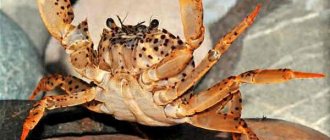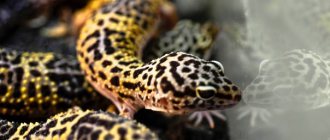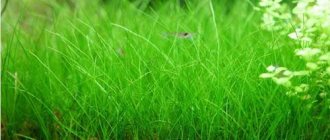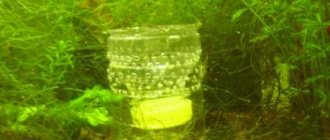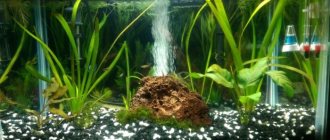The spotted leopard gecko is one of the most charismatic reptiles. The name of this animal is translated from Latin as “Good eyelids” and indeed, not every lizard can boast of such a pronounced charismatic anatomical adaptation.
Latin name: Eublepharis Macularius. The word "Eublepharis" is a combination of the Greek words Eu - "Good" and Blephar - "Eyelid", and the word Macula translates as "spot".
But the eyelids are not the only advantage and curious detail of the leopard gecko - the most popular reptile in the circles of lovers of these animals.
Dimensions
The length of the animal from the nose to the tip of the tail reaches up to 30 cm, but it has a very unusual physique for lizards. Typically, in most lizards, the tail length is from 40 to 50% of the total length, which makes the reptile's body proportional. But in spotted leopard geckos, the tail accounts for only a third of the total length. This does not in the least prevent the lizard from looking “balanced”, and even moreover, the short tail gives it a very cute look. This “limb” plays the role of a storage facility in which fat reserves accumulate. Therefore, hungry times are not scary for the leopard gecko - it can wait them out, using up the fat stored in the tail.
general characteristics
The spotted leopard gecko (sometimes called the leopard gecko) is a member of the Gecko family. Belongs to semi-desert lizards. In nature, it can be found in semi-fixed sands and rocky foothills . The leopard gecko lizard is found:
- on rocky slopes without vegetation;
- in semi-steppes;
- in the steppes.
The native habitat of the leopard gecko is steppe and semi-steppe zones.
Distributed in the following countries: Iraq, Pakistan, Afghanistan, etc. Body length with tail is about 30 cm, females are shorter than males. The color is mostly yellow or gray, with dark spots scattered throughout the body. Two or three rings are sometimes visible on the tail. Under natural conditions, males live about 10 years, solitary females - 8 years, constantly breeding females - 4 years. In captivity, the life of individuals lasts approximately 20 years.
Eublepharon lizards lead a crepuscular and nocturnal lifestyle. During the day they hide under rocks and in caves. They feed on arthropod larvae and small animals , including their own kind. Lizards are social. They form a group of a male and several females. The male defends his territory from invasion by other males.
In captivity they reproduce easily, live long and come in a wide variety of colors (morphs), so they are popular among terrarium keepers.
Color
In their natural habitat, leopard geckos have a “standard” color: from sandy to light yellow with dark brown or black spots scattered over the entire surface. This combination of colors gave this gecko its name - leopard or spotted. But thanks to the efforts of breeders, today you can find a wide variety of morphs - from snow-white with neat black spots, to plain orange or coal-black. You can get an idea of the morphs of these reptiles from photos of leopard geckos posted on the Internet.
origin of name
The Latin word gecko literally translates as “having good eyelids” and is a combination of the Greek words Eu meaning “good” and blephar meaning “eyelid”. The Latin word macula translates as “spot” or “blemish”; the animal received this name due to the natural spotting of the skin. The reptile is called leopard because the spots on its body are similar to the pattern of a wild cat (leopard) and the special “cat-like” expressiveness of its gaze. The species was described in 1854 by British zoologist Edward Blyth.
Photo credit: Matt Reinbold, CC BY-SA 2.0
Behavior
Unlike many lizards, the spotted leopard gecko cannot be called shy or withdrawn. He willingly communicates with his owner and is very curious. This is natural: in desert or barren steppe conditions, it is difficult to quickly find shelter in case of danger. It is much easier to be interested in everything that is happening around in order to find out about the threat in advance. Of course, nothing threatens the domestic leopard gecko, but its natural habits make it a very sociable and “contact” pet.
Another advantage of these reptiles is how long leopard geckos live. If you provide your pet with the necessary conditions, it can live up to 20 years, and in some rare cases even up to 30!
Character of the leopard gecko
These reptiles are similar to humans because each individual has its own unique character. For example, one lizard will be tame, while another will not tolerate tactile contact. When a gecko doesn't like something, it will make a sound similar to children's squeaks. More often, the spotted leopard gecko has an easy-going character and, what is most interesting, the lizard can distinguish its owner from other people.
Arrangement of the terrarium
Keeping and caring for a leopard gecko does not require serious investments or special labor. But some nuances are very important for maintaining the health and activity of your pet.
Unlike many other geckos, the leopard gecko does not have developed suckers on its toes, which allow them to move along steep surfaces. Therefore, for free and comfortable movement in a vertical plane inside the terrarium, it is necessary to install various driftwood, backgrounds, labyrinths and other volumetric accessories.
Compatibility
The leopard gecko painfully experiences combination with other animals. You should not plant representatives of other species in the same terrarium. This could result in turf wars leading to injury and bloodshed.
Moreover, despite their calm nature, leopard geckos cannot live among a large number of representatives of their species. It is advisable to house a maximum of three lizards in a large terrarium.
These pets need space and a sense of security that the territory belongs to them.
The leopard gecko is painful when it comes to being with other animals.
Terrarium dimensions
For an adult gecko that lives “alone,” a terrarium with dimensions of 30x30x30 cm is sufficient. It can be oriented horizontally or vertically, but one of the walls should be equipped with shelves or niches along which the leopard gecko can move - just like on mountain slopes or rocky deserts in their natural environment.
But while the reptile is small, it is not worth purchasing a terrarium “for growth”. It is difficult for gecko cubs to hunt in a large space, so it is recommended to increase the size of the terrarium upon reaching the age of six months. After all, at about six months, these lizards begin to take a keen interest in everything around them and explore all the space available to them. In addition, it is after six months that leopard geckos begin to grow especially intensively.
Ventilation
When keeping a leopard gecko at home, it is very important to ensure high-quality ventilation. Stagnant air can lead to the development of fungal and inflammatory diseases of the skin and lungs in the gecko. To a certain extent, natural air circulation helps to ventilate the space - the movement of warm and cold air masses due to properly done ventilation and heating of the terrarium (or container). The best option is a series of holes at the bottom through which cold air will enter, as well as a series of holes at the top on the opposite wall and in the lid through which warm air will escape, creating a natural circulation. Heating should be installed exactly on the side where the holes are made in the upper part.
Priming
Almost any soil can be used as a primer, namely:
- Larch bark;
- Pine bark;
- Plastic green mats;
- A rug with short and soft pile (a la artificial turf);
- Aquarium pebbles of large fraction;
- Special terrarium sand;
- and even paper napkins (for babies).
Soil that is NOT recommended to use:
- Any wet soil (coconut substrate, coconut chips, etc.);
- Large sea pebbles/large round stones;
- Sand collected from the street;
- Porous rubberized mats;
- A regular rug for the front door.
Humidity
The gecko terrarium should not be wet. It is enough to keep a drinking bowl with clean water in it, as well as a wet chamber. You should not regularly spray the air from a spray bottle. The humidity level should be within standard room humidity, namely not higher than 40-50%. The drinking bowl is also useful for quenching the gecko's thirst. In some cases, it is enough for these lizards to spray the walls in a damp chamber - they willingly lick droplets of “dew” from the walls, but in any case, a drinking bowl won’t hurt either.
During the period of molting or laying eggs in the terrarium, it is necessary to more responsibly ensure that the wet chamber for the leopard gecko is truly “Wet”. If you don’t know what it is, we’ll tell you: it’s a container with a small hole that imitates a hole, and lined with filler that retains moisture well. This can be coconut substrate, sphagnum moss or regular paper towels. You can buy it at a pet store or make it yourself from a small plastic food container.
Interacting with your pet
Every owner wants to learn how to interact with a pet, but this is not so easy, all leopard geckos bite with their small teeth. To accustom your leopard gecko to your hands, you need to gradually, every day, before each feeding from a very young age, carefully pick up the baby in your hands. Do not scare the lizard or make sudden movements. Let the gecko move gently along your hands and body, but be sure to secure its movements so that the baby does not run away or fall.
After a couple of minutes of such an excursion, you can offer your pet an insect.
In between feedings, you can place your hand in the terrarium and allow the leopard gecko to come close to it.
Remember that all your movements, even when the lizard gets used to your hands, should be soft and careful, because the gecko’s body is very fragile and very easy to damage.
To train a leopard gecko, you need to pick up the baby every day.
Heating
When keeping a leopard gecko, maintaining the correct temperature is the basis. Like any reptile, this gecko can only maintain and regulate its body temperature using external heat sources. For heating, you need to install a thermal mat or thermal cord on the bottom of the terrarium (or under, if a plastic container is used) so that the warm zone occupies 1/3 of the area of the terrarium bottom and warms the soil to 32-34°C. It is also important that the warm zone is not in the middle, but at the edge of the terrarium; on the side where the ventilation is at the top. This way, the house gecko will be able to independently choose a higher or lower temperature - approaching a heated area or moving away from it into a cool zone, where the temperature should be in the range of 24-26 ° C.
Lighting
When keeping leopard geckos at home, you need to take into account that these animals lead a predominantly crepuscular lifestyle. Therefore, there is no need for lighting. If you really want to illuminate your terrarium for beauty, we recommend using LED lamps so as not to create additional heat. Incandescent lamps are strictly not recommended. There is also no need for ultraviolet lighting. At home, the leopard gecko needs a high-quality varied diet and calcium with fortified supplements. A UV lamp will only be needed if the animal cannot absorb vitamin D3 and problems resulting from this have appeared (incipient rickets, metabolic disorders).
Wet chamber
The wet chamber is usually placed one per terrarium. Although, if the area allows you, place 2 wet chambers - one in a warm area (where the heating mat is located), and the second in a cool area. You will see for yourself which wet chamber your leopard geckos will choose. Mine always prefer warm. A wet chamber is necessary for normal molting of geckos, and some individuals simply use it constantly, they love to sleep there)))
Accessories
The leopard gecko is a lizard that is very active and loves to explore its surroundings. At the same time, like any reptile, it needs shelter. Based on this, a wall-mounted “climbing wall” with ledges, niches, and steps should be installed in the terrarium. When kept at home, leopard geckos will happily travel vertically, walk along an artificial gorge and thus satisfy their need for movement.
Ideally, you need to install two shelters in the terrarium - in a warm and cool zone, so that the pet can choose a place to rest.
How to choose
It is necessary to choose the type of lizard based on the conditions in which it is accustomed to living. For example, Turkmen or Irish species are accustomed to living in dry deserts or savannas. It is problematic to create such conditions in the house, which means there is a high risk that the gecko will start to get sick.
Once you have decided on the species, take a close look at the lizard you want to purchase. It should have a uniform color and there should be no visual problems on the body.
Look at the eyes. If a lizard is sick with something, its eyes will be covered with a dark film.
Don't forget about quarantine. Before you move someone in with permanent residents, it's important to keep newcomers separated for a couple of weeks. This is necessary in order to prevent the possibility of infection.
It is necessary to choose a lizard based on the conditions in which it is accustomed to living.
Feeding
As for the leopard gecko's diet, the gecko is completely unpretentious. In its natural habitat, it eats everything it can get - insects, small rodents and even small reptiles.
But at home, the leopard gecko’s diet is slightly limited. Most often, its diet consists of crickets, cockroaches, locusts, mealworms, and soldier fly larvae. In some cases, caterpillars of tobacco hawk moth, zofobas, and naked mice can be offered as delicacies. It is also worth remembering that you should not feed your leopard gecko with insects caught on the street, since all street insects almost always carry parasites and pose a danger to the gecko. In addition, there are arthropods, lepidoptera and larval forms of a number of insects that are simply poisonous. In this case, we are not talking about parasitic diseases in the lizard, but about its life.
It is important to provide the gecko with the correct temperature regime - the quality of digestion depends on how well it warms up. You should also adhere to the recommended feeding regimen. This morning and evening time is the period of greatest activity of the reptile. And the amount of food and frequency of feedings depend on age:
- Very small geckos (up to 1.5 - 2 months) are fed 2-3 medium crickets every day;
- Older ones (from 2 to 4 months) are transferred to feeding 3-4 medium-large crickets every other day;
- Large adolescents (from 4 to 6 months) are fed once every 3 days, that is, two days later on the third, offering 3-5 large crickets;
- Almost adults (from 6 to 10 months) are fed once every 4 days, that is, after 3 days on the fourth, 5-7 large crickets per feeding;
- Fully adult leopard geckos (from 1 year and older) must be fed once every 5-7 days (depending on the condition of the animal), offering 10-15 large crickets at each feeding.
It is worth noting that crickets are indicated only to understand the size of the food item. You cannot feed your leopard gecko with crickets alone; you need to diversify its diet. Crickets can make up a maximum of 70% of the total diet.
During molting, the leopard gecko may refuse to eat; this is normal. Once the old skin is shed and the function of all organs is restored, the gecko will catch up.
Breeding and caring for young animals
Already after reaching 9 months, the leopard gecko can be considered sexually mature. These individuals can actively reproduce. The mating season begins in early November and lasts until March.
Two females and one male must be placed in the tank. Daylight hours for such lizards increase by several hours and reach a total of 14-15 hours.
The temperature rises to 32 degrees Celsius. Humidity levels increase. This climate is conducive to the beginning of mating games.
After 3 weeks from the moment of mating, the female already lays eggs in previously prepared soil.
During the mating season, a female can make a maximum of 10 clutches, each of which contains from 1 to 2 eggs. They mature in 2 months.
The female lays 1-2 eggs at a time
If the temperature remains no higher than 26 degrees from the moment of laying, then the females will hatch. If the temperature rises above 30 degrees, it’s males.
The leopard gecko's weight at birth is from 5 to 10 g. The maximum body length is 8 cm.
It is better to remove adult leopard geckos from the terrarium after mating so that they do not harm the babies, because they lack maternal instinct.
To effectively care for lizards, you need to prepare incubators in advance. They are easy to make; just use plastic containers, such as cut-out bottle bottoms covered with paper napkins.
The cubs are separated from the mother into a separate incubator.
Lizards can be fed insects, and calcium can be added to their food to speed up growth. In the terrarium, once every few days it is necessary to turn on the ultraviolet lamp for a few minutes.
Newborn leopard geckos live together for up to 4 months, and then they need to be resettled.
Content by group
Although leopard geckos are not aggressive towards each other, keeping males together is strictly prohibited. If you really want to keep them in a group, then you need to do this - 1 male and 2-3 females. All should be approximately the same size. It is necessary that the terrarium be equipped with shelters for each gecko, that is, as many geckos as there are shelters. Also, geckos should not go on a hunger strike while they are sitting together. When males reach puberty, you need to know that they are capable of fertilizing a female that is not yet physically developed enough, and this can cause a delay or complete cessation of her growth or even cause death, so it is necessary to remove females that you did not intend to introduce into the breeding season.
Babies must be kept separately, as at a young age they often bite off each other's fingers and tails.
Personally, we advise keeping leopard geckos in any case only separately, and placing them only during the breeding season.
Eublefar - interesting facts
There is a lot of interesting information associated with these reptiles, for example, these include the following facts:
- Geckos are the only reptiles that can use their voices to produce different sounds.
- If the lizard eggs are at a temperature of 30 degrees, then only boys will be born, and if 27, then girls will be born.
- In the domestic leopard gecko and other geckos, the eyes are not protected by a movable eyelid, so the reptile removes dirt with its tongue.

